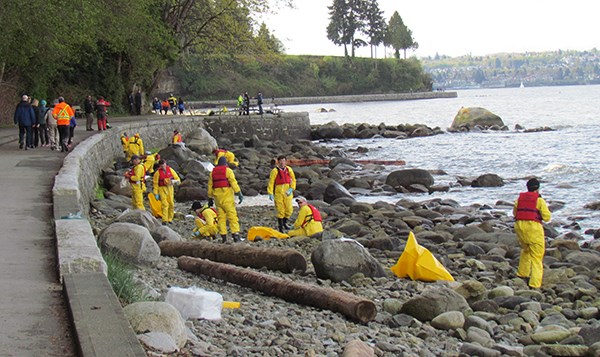The recent bunker fuel spill in English Bay from the M/V Marathassa sent the news media into overdrive and offered ample opportunity for high political drama and grandstanding by public officials.
With the initial commotion now fading into the background, it is becoming clear that what should have been a minor event quickly metastasized into a major incident because of a lack of early response preparedness and associated communication breakdowns.
It could have been much worse, but the immediate takeaway is that oil and coastal seawater are never a good mix. It was also a wake-up call for many busy marine traffic jurisdictions in B.C. that will have to reassess their response capacity and vulnerability to toxic spills.
When it comes to rogue oil slicks, Squamish has its own history. In 2006, the cargo ship Westwood Anette collided with a moorage piling and ran aground in the Squamish harbour, leaking 29,000 litres of diesel fuel into Howe Sound and the Squamish estuary. At the time, local environmentalists referred to the cleanup as a token effort and the Georgia Strait Alliance called the response inadequate. A year after the leakage, oil was still visible in the estuary and contaminants continued to enter the marine food chain.
Two years ago, a 40-foot vessel sank in the Mamquam Blind Channel, leaking fuel into Squamish marinas. Harbour manager Bill McEnery said the oil residue wiped out the largest herring spawn he had seen in several years, and he questioned why district authorities only gave the episode a cursory glance.
Last year, 1,500 litres of diesel fuel spilled into the Mamquam Blind Channel after the Elf, a derelict tug, sank. The Canadian Coast Guard co-ordinated the cleanup operation with a number of other organizations attending the site including municipal bylaw and environmental officers. Squamish environmentalist John Buchanan said the leakage left behind a residue that coated the substrates where the herring spawn. He also found dead juvenile pink salmon along the shoreline of the Mamquam Blind Channel.
When the Woodfibre mill operation was in full swing, the pulp mill and Squamish Terminals jointly handled about 200 ships per year. These days, the number of ships is half what it used to be, but shipping in Howe Sound will expand in the next decade with the possible addition of the Woodfibre LNG operation and expanded activity related to the oceanfront development.
The stage is set to expedite the long anticipated Squamish Marine Strategy. Phase one has just been completed. Phase two, which will soon be underway, seeks stakeholder input concerning various marine traffic related issues.
In the wake of recent events in Vancouver, two priorities will be to proactively mitigate against the risk of future oil spills in local waters and to ensure timely emergency response mechanisms are readily available.



